Himalayan Expeditions
The Himalayas, however intimidating it may seem ,has always had visitors.It has always been an abode for adventure spirits and thrill seekers.In 1923,when asked why he wanted to scale the Mount Everest,the highest peak not only among the Himalayan ranges but also the highest peak in the world, George Mallory, the mountaineer who went on to participate in the first attempt to climb the same replied, “Because it is there”.These three words became one of the famous quotes in mountaineering and continues to inspire mountaineers all around the world. This blog post aims to explore the data I came across in the weekly Tidy Tuesday data project. The dataset is originally sourced from The Himalayan Database based on the expedition archives by journalist Elizabeth Hawley. The Tidy Tuesday datasets used in the analysis contains data on the peaks of the Himalaya,the expeditions led to those peaks as well as the members who participated in those expeditions.

A long line of climbers waiting to summit Mount Everest on May 22.Source : The New York Times. Credit…@nimsdai/Project Possible, via Agence France-Presse — Getty Images
Before the analysis,I wanted an at-a-glance image of the data in the datasets therefore I used the visdat package to see all the variables,it’s data types,the number of observations and also the missing values. Let us look at each dataset, starting with the dataset on the peaks as shown below in figure 1.
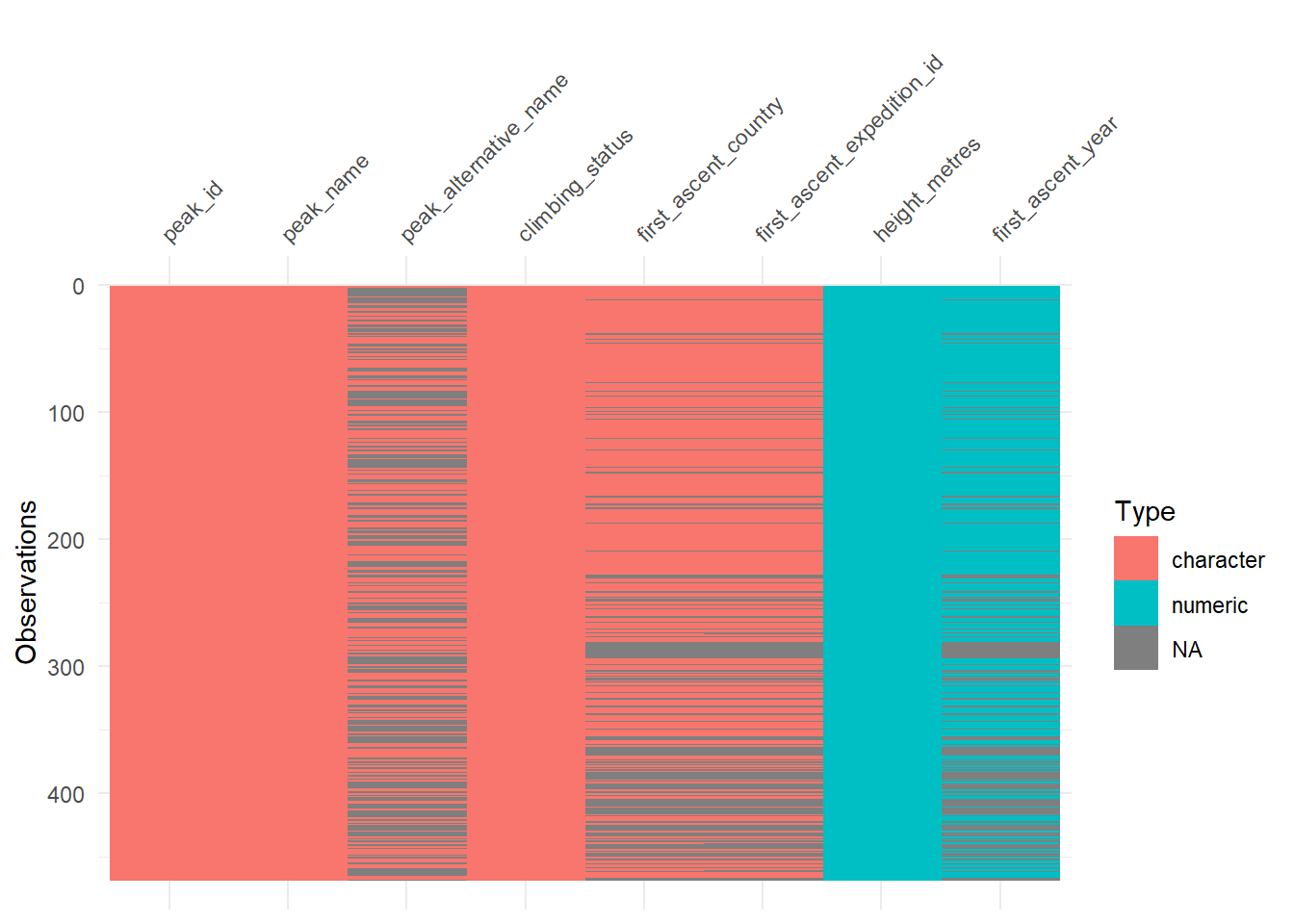
Figure 1: Data on Peaks
Digging deeper to see the observations, it was found that the year of first ascent for one of the peaks,
Sharphu II is given as 201 which is unlikely,therefore by doing a little bit of googling it was found that the year of first ascent is 2018 and the observation was corrected accordingly for the analysis.
| peak_id | peak_name | peak_alternative_name | height_metres | climbing_status | first_ascent_year | first_ascent_country | first_ascent_expedition_id |
|---|---|---|---|---|---|---|---|
| SPH2 | Sharphu II | Tanga II | 6328 | Climbed | 201 | USA | SPH218301 |
| LNPO | Langpo | Longpo | 6965 | Climbed | 1909 | UK | LNPO09301 |
| JONG | Jongsang | Jonsong, Jhinsang | 7462 | Climbed | 1930 | Germany, Austria | JONG30101 |
| NEPA | Nepal Peak | NA | 7177 | Climbed | 1930 | Austria | NEPA30101 |
| RAMT | Ramtang | NA | 6601 | Climbed | 1930 | Austria, UK | RAMT30101 |

Figure 2: Data on Expeditions
Similarly the glimpse of data on the members participated is as shown in figure 3.
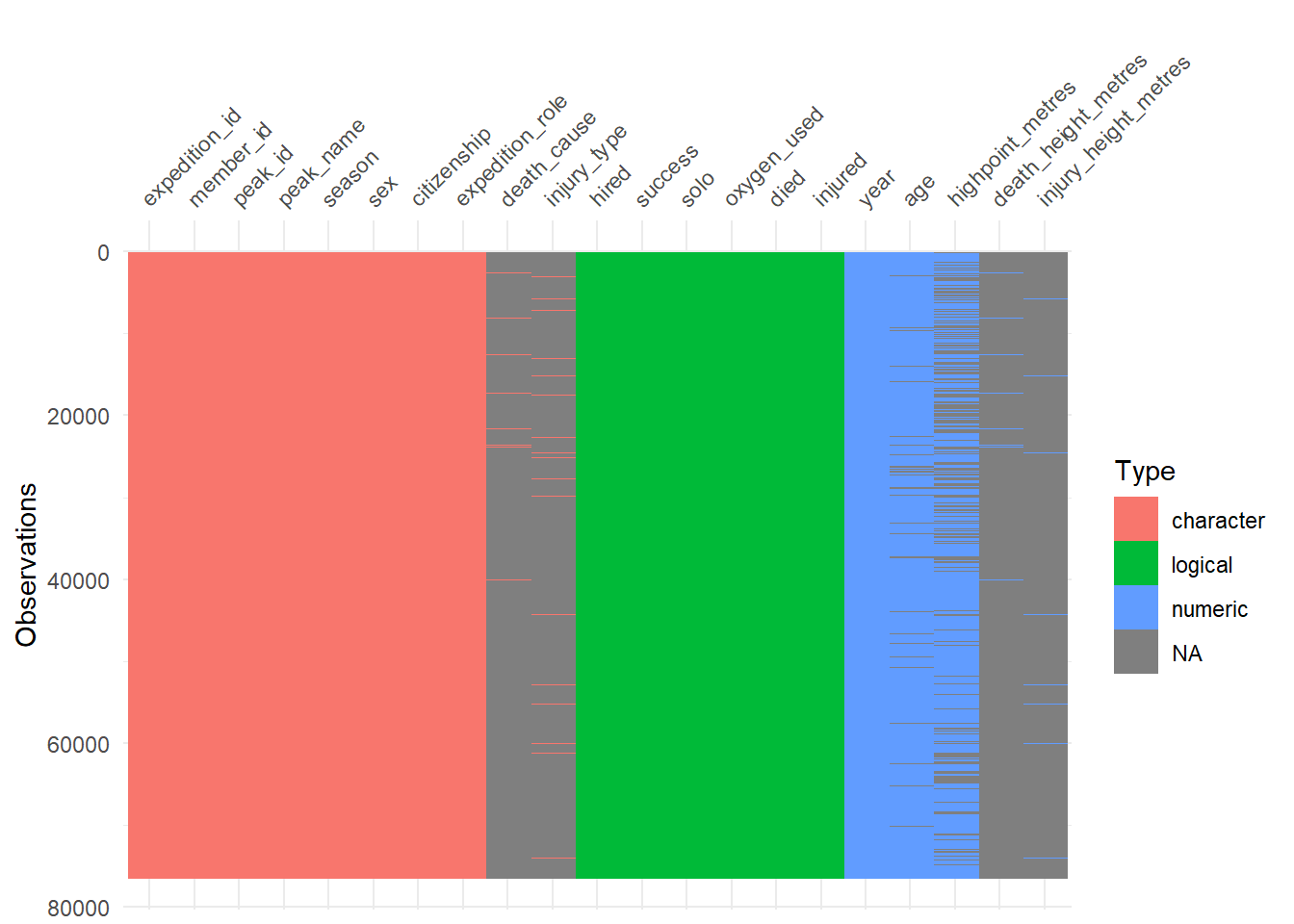
Figure 3: Data on Expedition Members
Himalayan Expeditions over the years
Now that we got a glimpse of the datasets used,let us look into how expeditions to the Himalayan ranges fared over the years in figure 4.

Figure 4: The figure shows himalayan Expeditions over the years.It can be seen that there is fall in number of expeditions after 2010.
In the above plot that,we can see that there is a decline in the number of expeditions after 2010 , so I did a little bit of detective work and found out an article that says ,According to Nepal’s Department for Tourism since 2010 the total number of registered Sherpas has decreased by a fifth. This could be the reason why there is a decline after 2010.
How high are the mountains of the Himalaya ?
Let’s now see how high are the peaks of the mighty Himalayas using the dataset on peaks.The mountains in Himalayan ranges has an average height of 6656.64 metres.To dig deeper into the heights of these peaks that have been climbed and yet to be climbed, I plotted figure 5 below.
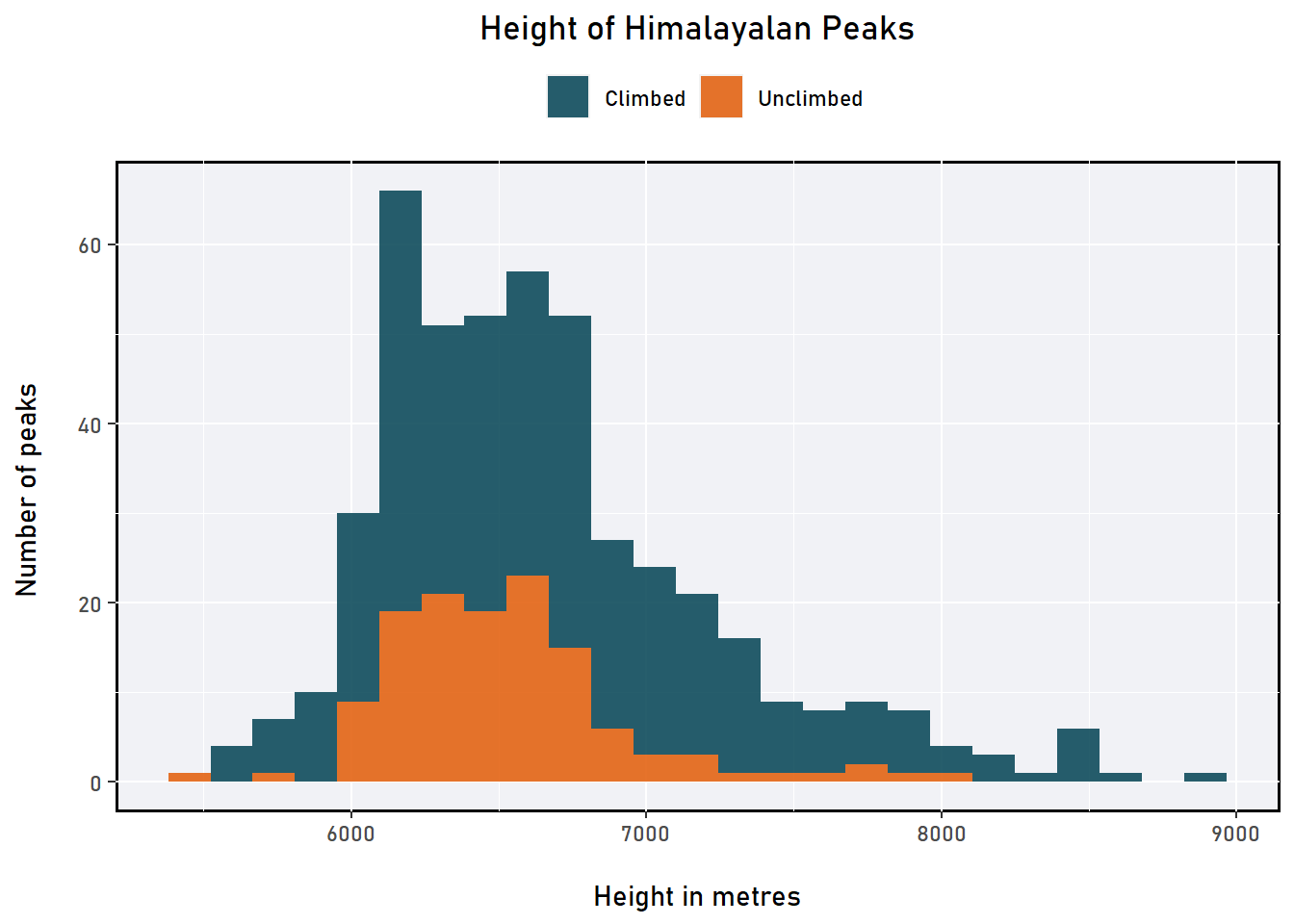
Figure 5: The histogram shows the distribution of heights of the peaks in Himalaya that have been climbed and yet to be climbed.It is seen that majority of the climbed peaks are between 6000-8000m high where as the unclimbed are around 6000-7000m high.
I always had the idea that higher the peak more difficult it is to be climbed therefore I found it quite interesting that peaks that are much lower in height are the ones in fact that are yet to be climbed.Being a curious creature, I wanted to know why it was so and I did some googling as usual(I have reached a point in my life where I can confidently say that Google is my best friend) and it seems that BBC had the answer to it.The reason why hundreds of peaks are yet to be conquered could be because of logistics problems or even political obstructions.
What are the main reasons for termination of expeditions?
The expeditions to Himalayan ranges are filled with adventure,hope,thrill and also a fair share of danger.Let’s look into what the main reasons for the termination of expeditions using the dataset on expeditions, in figure 6.

Figure 6: The figure shows the reasons of termination of expeditions to Himalaya.It can be observed that majority of the expeditions were successful.
The above figure shows that an expeditions being successful is one of the top reasons of it being terminated but there is a considerable amount of unsuccessful expeditions due to bad weather conditions like storms, high wind and bad conditions like deep snow, avalanche, falling ice, or rock among other reasons shown.
What about women mountaineers?
While exploring the dataset on the expedition members, I wanted to see how many of them were women and it was found that there is an astonshing difference between the number of men and women participating in the expedition. Only 9.21 % of the total expeditioners in record were women where as the rest 90.79 % were men. Although it has been a slow journey for the women,we can see in figure 7 that the number of women joining expeditions is increasing.

Figure 7: The figure shows the gender distribution of the expeditioners over the years.The number of women joining expeditions has been on the rise.
How old are these expeditioners?
When I was doing my bachelor’s,I happened to hear about a 5-year-old being the youngest ever to have reached the Mount Everest base camp and it completely blew my mind then and even now. Therefore,I really wanted to explore the data to see the age group the expeditioners fall into when they had climbed the Himalayan peaks and inorder to do so, the dataset on members were considered.
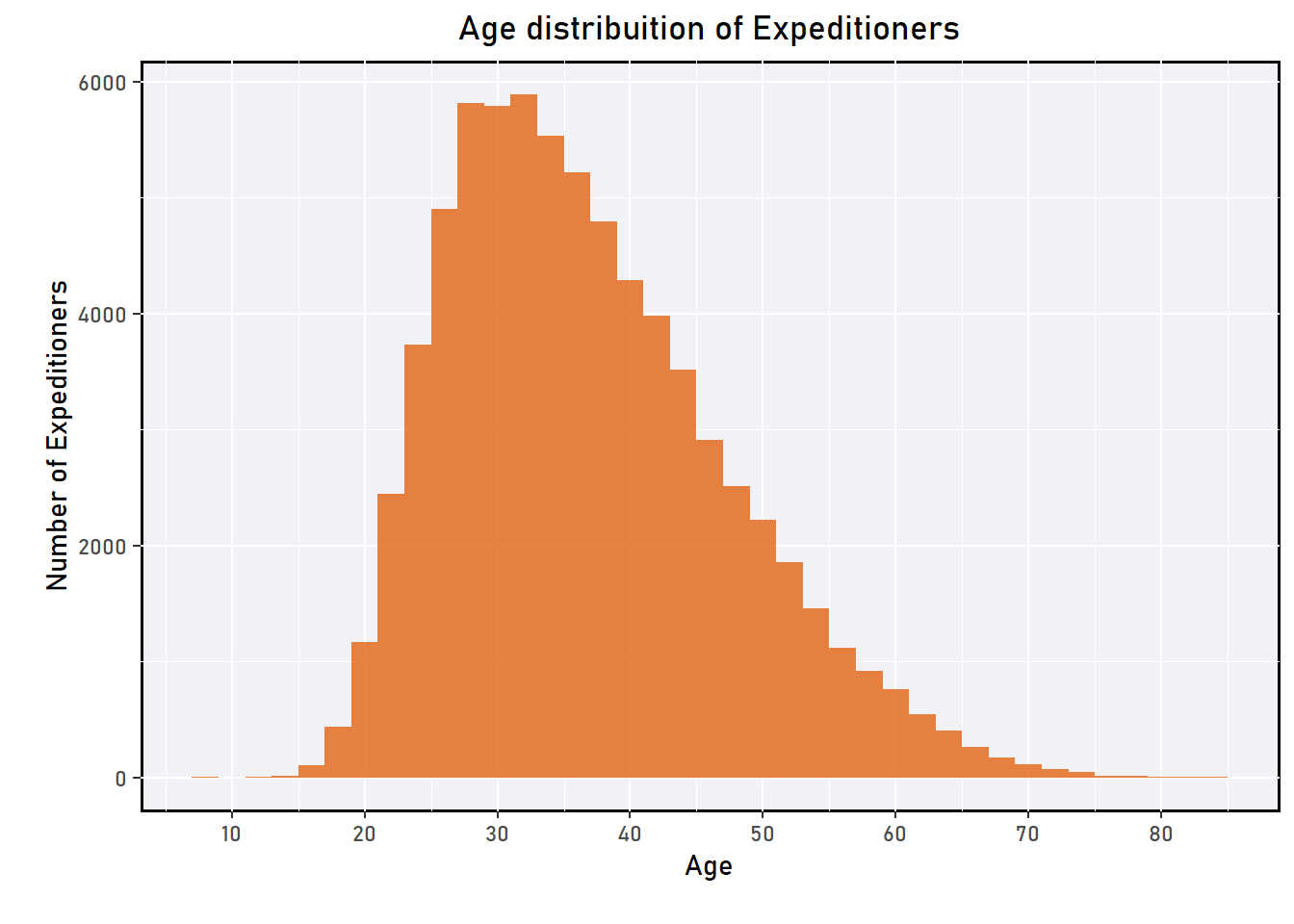
Figure 8: The figure shows the age distribution of the expeditioners and it can be observed that majority of them are around 30 or above 30 years old.
The figure above 8 shows that majority of the expeditioners are above 30 years of age and it can also be seen that there is a presence of really young population of below 20 years of age.
While I was extensively googling for this analysis, I came across a quite interesting quote by none other than Edmund Hillary,one of the two-man team who first set foot on the peak of Mt.Everest. He once said,“I think Himalayan climbers tend to mature fairly late. I think most of the successful Himalayan climbers have ranged from 28 to just over 40, really.”. This really intrigued and prompted me to check if the data says the same.

Image Source:quotefancy.com
To check if the data holds true by what Edmund Hillary said,I took the data on the members who were part of successful expeditions and plotted their age distribution as seen below in figure 9.
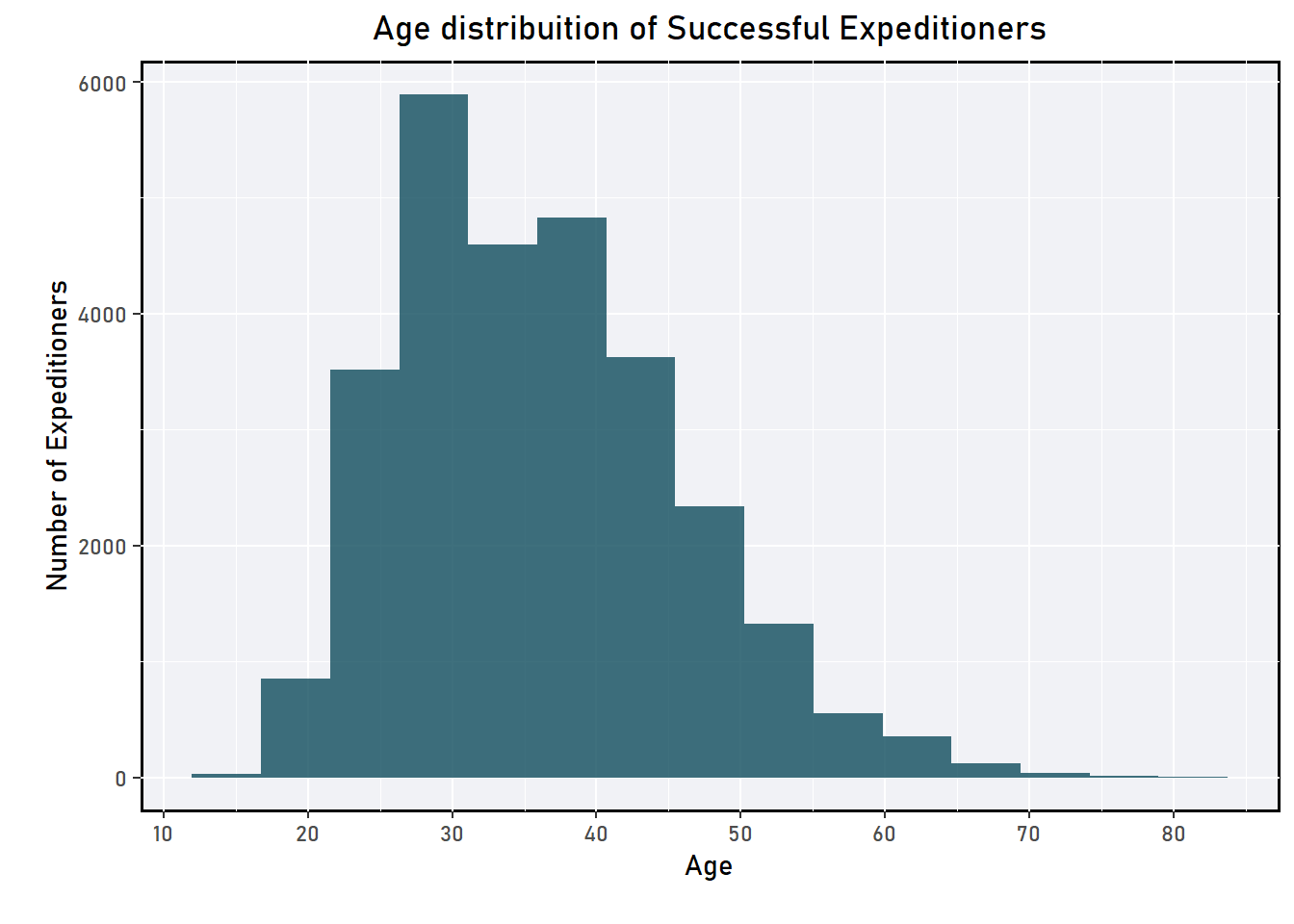
Figure 9: The figure shows the age distribuition of successfull expeditioners.It can be observed that majority of the expeditioners are of the age group early 20s - late 40s.
It is very interesting to see that the data does support what Edmund Hillary said years back!
The Role of Sherpa
The Sherpa are an ethnic group who live in the high mountains of the Himalayas in Nepal. A majority of them work as guides who helps mountaineers to climb the Himalaya.
Fun fact : The Sherpa community weren’t always involved in mountaineering.They were hired as porters by the British, who controlled the Indian sub-continent and planned mountain climbing expeditions.Since then,due to their hard work and agility they have been climbing the mountain range that has few of the highest peaks on Earth.
As we analyze the data,it is very important to consider the role of the Sherpa guides as they are doing a job with high risks and no glory. Let us first look at gender and age distribution among the hired sherpa guides below in table 1.In order to find the hired members who are from Sherpa,I took the variable hired into consideration and also filtered the citizenship of the individual to India,Nepal and Nepal/India.
| Age | Female | Male |
|---|---|---|
| 10-20 | 2 | 367 |
| 20-30 | 21 | 5267 |
| 30-40 | 2 | 5472 |
| 40-50 | 0 | 2086 |
| 50-60 | 0 | 233 |
| 60-70 | 0 | 10 |
From the table above,we can see that not many women in Sherpa community work as hired guides and that among women majority of them are of the age group 20-30 where as majority of them fall between 20-40 years of age.
Let’s now move on to the more pressing topic that is,given the dangerous nature of the job,it is seen in table 2 that around 30% of deaths during the expeditions are of the Sherpa community alone which becomes even more painful when you come to know that according to npr.org,there have been instances where the Sherpas didn’t even receive the certificates their foreign counterparts get to prove they have reached the summit.
I would like to share here,the National Geographic’s 5 Ways to help the Sherpas of Everest that has been shared in the Tidy Tuesday GitHub repo.
| Expeditioner | Deaths | Proportion |
|---|---|---|
| Non Sherpa | 750 | 70.68803 |
| Sherpa | 311 | 29.31197 |
What are the causes of deaths during expeditions?
It is of no doubt that mountaineering is thrilling as well as dangerous. The figure 10 below, shows the causes of deaths of the expeditioners.

Figure 10: The figure shows major causes of deaths during expeditions
We can see that most of the deaths seen is due to avalanche followed by fall,AMS(Acute mountain sickness) and other illness.It cannot be ignored that unexplained disappearance is among the top reasons of deaths of expeditioners.
After analyzing this amazing dataset,I came to one conclusion that I dont think I will ever go for climbing the Himalaya.Seeing the causes of deaths itself scares me so I don’t think mountaineering is my thing.Jokes apart,through the analysis we came to know that himalayan expeditions has seen a huge increase over the years and that even though women had a slow start,their pace is picking up as the number of women expeditioners go up each year. We also saw that most of the expeditioners are around or above 30 years old and also that Edmund Hillary was on point when he said most of the successful mountaineers are between the age 28 to over 40. Another point that we noted is that around 30 % of deaths is of the hired guides from Sherpa community alone and that avalanche,fall,AMS and other illness are among the top causes of death.
This amazing dataset has a lot more potential for exploration,I feel like I have just barely touched the surface and most importantly, thank you for taking the time to read this.